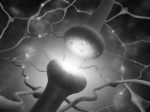 An addict’s abnormal brain biology may increase his or her risk of substance abuse relapse. Studies show that MRI-based neuroimaging research holds potential in identifying markers for this increase, as published in Alcoholism: Clinical & Experimental Research in June 2011.
An addict’s abnormal brain biology may increase his or her risk of substance abuse relapse. Studies show that MRI-based neuroimaging research holds potential in identifying markers for this increase, as published in Alcoholism: Clinical & Experimental Research in June 2011.
At least 60 percent of individuals in recovery for alcohol abuse disorders relapse within six months of treatment. Because the reward system of the brain (BRS) has been “implicated in the development and maintenance of all forms of addictive disorders,” researchers of the neuroimaging study compared thickness, surface area and volume of neocortical components of the reward system of the brain. The study participants included three groups: light drinkers, alcohol-dependent individuals still abstinent after treatment, and those who relapsed. (Medical News Today)
The reward system of the brain (BRS) includes regions in the frontal and temporal lobes, limbic system, basal ganglia and other subcortical structures. These form a functional network which involves our experience and response to pleasure and aversion, mood regulation, higher-level cognitive abilities, such as problem-solving, reasoning, decision-making, planning and judgment, memory, as well as impulse control. It is believed that abnormal biology of the BRS may play a significant role in the development of drug and alcohol dependencies.
Researchers used magnetic resonance imaging (MRI) to examine the BRS and determine whether there were structural differences in the brain’s cortex for the three groups. The findings support the fact that neurobiological factors influence relapse. Of the two groups who suffered with alcohol dependency (abstainers and relapsers), their brain’s had significantly thinner cortices in the BRS and throughout the brain. Those who had relapsed showed showed the most substantial structural abnormalities in the BRS with lower surface area and volume than the abstainers and the control group. This may mean they have fewer brain cells and neural resources available to assist with recovery. (Medical News Today)
Another significant finding was that of those individuals who relapsed, the ones with the greater volume and surface area in several regions of the BRS had a less severe relapse.
Not only do neuroimaging techniques promote a better understanding of the neurobiological factors associated with relapse, but as this study shows, such methods can be useful in identifying addicts with the greatest degree of neurobiological abnormalities and thus the most at risk for relapse at the beginning of treatment. This can help predict who will benefit most from certain treatments and aftercare plans.


